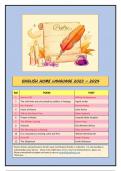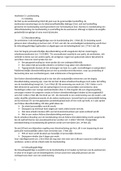Summary
Summary Grade 12 Poems English HL NSC 2024/ 2023 and Notes
- Course
- English Home Language
- Institution
- 12th Grade
Grade 12 NSC Exam Notes on ALL Poetry, Line by line analysis for all poems and explanations for those who do not understand and want to improve poetry marks. I got an A in matric last year using these notes. It includes notes for all the poems which are 1 Sonnet 130 William Shakespeare 2 The chi...
[Show more]





